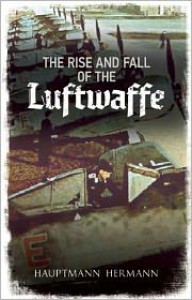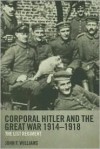Currently reading
ANALYSIS OF AN AIR FORCE BUILT FOR WAR

"The Rise and Fall of the Luftwaffe" was originally published in 1943 by Hauptman Hermann, a former First World War bomber pilot in the Imperial German Army Air Service who went on to study aeronautical engineering in the early postwar years and worked for Hugo Junkers, one of Germany's most far-sighted and innovative aviation pioneers and manufacturers before Junkers was forced out of ownership of his company by the Nazis because he wanted no part in their schemes for rearmament; Hermann would leave Germany shortly before the outbreak of the Second World War for America, where he acted as an aviation expert for the U.S. government.
In this book, Hermann (whose real name was Hermann Steiner) sets out to show the reader that "(1) the Luftwaffe was not designed for a prolonged war; (2) the Luftwaffe did not believe in building spares or repair facilities; [and] (3) the Luftwaffe made a serious mistake in not developing a heavy bomber." While he makes some insightful points about some of the personalities in the Luftwaffe (e.g. Hermann Göring - the head of the Luftwaffe - and his chief lieutenant Erhard Milch whom Steiner knew personally), he tries to leave the reader with the impression that the average Luftwaffe pilot was part of an elite within the German Wehrmacht (like the Waffen SS), a diehard Nazi wholly motivated by Hitler's creed. Well, some years ago, I read an account by the great Luftwaffe fighter ace Günther Rall in which he stated that Luftwaffe officers were not allowed to join the Nazi Party. I tend to put credence in Rall's account because he was a prewar trained pilot who managed against all odds, through 5 years of combat flying over Western Europe and the Eastern Front, to emerge from the Second World War with 275 aerial victories to his credit.
Notwithstanding what I regard as Steiner's oversimplification of some matters in this book, a lot of what he set out to show about the raison d'etre, organization, strengths and shortcomings of the Luftwaffe have validity (as many postwar publications have proven through extensive research). For that reason, it is worthwhile for any military aviation enthusiast to read "THE RISE AND FALL OF THE LUFTWAFFE."
 1
1













